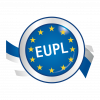Anni Säär (Estonian Human Rights Centre) and Addi Rull (Tallinn Law School) recently focused on Technology Transfer in the EU, or the importance of exporting strategically important ICT solutions to other EU Member States.
The fast development of ICTs pose new challenges to the European Union and its Member States. Every EU country has its own policies regarding technology transfer, ownership of state e-services, and the possibilities how the state-owned or licensed e-service could be exported. Taking into account the free movement of goods, the EU has created a technical platform (JOINUP) and a legal interoperability tool (the EUPL) to cooperate and export IT solutions. However, the lack of preparedness of infrastructures, legislation and stakeholders for cross-border exchanges poses a threat to IT transfer and should be taken into consideration in the EU as well. In the coming decades the number of outsourced ICT solutions, strategically important ICT solutions, public services and critically important information exchange platforms developed on behalf of the states, will grow exponentially, the authors said. Still, digital development is uneven across the EU, they grow at different speeds and the performance is quite splintered. There are legal provisions which are outdated and therefore impede technological cooperation and export of IT solutions. A Member State may restrict the ICT licensing based on national security and policy reasons and the ownership of intellectual property might pose a threat to technology transfer or further development of the IT solution. There are examples of strategically important export of ICT solutions, the experience at which can be expanded to cover other EU Member States. Strong collaboration would enable mutual learning from past experiences along with the opportunities for better use of technology. Parallels can be drawn with military technology transfers, as the policies and legal framework was first developed and mostly used with them. This introduces a question of what are the conditions for exporting strategically important ICT solutions from one Member State to another, given that there is no compulsory common legal framework developed yet, and who should decide whether to transfer or not?
Authors take as example the possibility for reusing the Estonian software X-Road, arguing that – while the EUPL exists, there has been few discussion regarding who should make the decision for possible sharing or transfer of ICT assets. The recommendation is that this should be decided by centralised regulatory agency or by each government, or preferably be generally stated in the national law that state assets can be transferred through open source licence. The problem is that currently there are few examples of such general provisions. In the specific case of X-Road, the Government of the Republic of Estonia issued a regulation ‘Data exchange layer of information systems’ (2008; Infosüsteemide andmevahetuskiht), which stated that European Union Public Licence (EUPL) will be the official licence to distribute X-Road.
More information in:
doi: 10.1515/bjes-2015-0011 Baltic Journal of European Studies Tallinn University of Technology (ISSN 2228-0588), Vol. 5, No. 2 (19)

